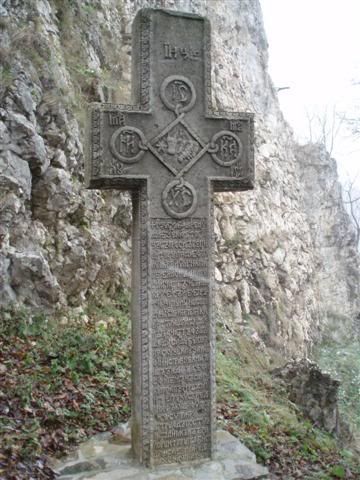
In Romanian lore, the names for an undead vampire include:
* Strigoi (plural: Strigoi)
* Moroi (plural: Moroii)
* Varcolac (plural: Varcolaci)
* Pricolic (plural: Pricolici)
All six of these names can be used to mean an undead vampire who periodically leaves his grave to prey upon the living and returns to his grave to rest. But each term also has a special meaning.
A person born with a caul, extra nipple, extra hair, born too early, black cat crossed the mother's path, born with a tail, born out of wedlock, one who died an unnatural death, or died before baptism, was doomed to become a vampire, as was the seventh child of the same sex in a family, the child of a pregnant woman who did not eat salt or who was looked at by a vampire or a witch. Moreover, being bitten by vampire meant certain condemnation to a vampiric existence after death.
The vampire was usually first noticed when it attacked family and livestock, or threw things around in the house. Vampires, along with witches, were believed to be most active on the Eve of St George's Day (April 22 Julian, May 4 Gregorian calendar), the night when all forms of evil were supposed to be abroad. St George's Day is still celebrated in Europe.
A vampire in the grave could be discerned by holes in the earth, an undecomposed corpse with a red face, or having one foot in the corner of the coffin. Living vampires were identified by distributing garlic in church and seeing who did not eat it.
Graves were often opened three years after the death of a child, five years after the death of a young person, or seven years after the death of an adult to check for vampirism.
Measures to prevent a person from becoming a vampire included removing the caul from a newborn and destroying it before the baby could eat any of it, careful preparation of dead bodies, including preventing animals from passing over the corpse, placing a thorny branch of wild rose in the grave, and placing garlic on windows and rubbing it on cattle, especially on St George's and St Andrew's day.
To destroy a vampire, a stake was driven through the body, followed by decapitation and placing garlic in the mouth. By the 19th century, one would also shoot a bullet through the coffin.
When a vampire was believed to be the cause of a plague or a disease which slowly infected its living former family or relatives, the heart, and occasionally also the liver, of the exhumed corpse were sometimes burned and the ashes of these were mixed with water. This mixture was then drunk as a medicine by those who were suffering from the disease inflicted by the vampire and others who feared that they were also victims of the vampire. Also, the people might fumigate themselves by standing in the smoke of the burning heart.
Examples of this can be found in The Vampire in Europe by Montague Summers, mostly in the form of excerpts from the old Romanian journal of folklore, Ion Creanga. Quite the same practice occurred also in Poland and, rather oddly, New England."
source:
http://vampires.monstrous.com/romanian_vampires.htm

No comments:
Post a Comment